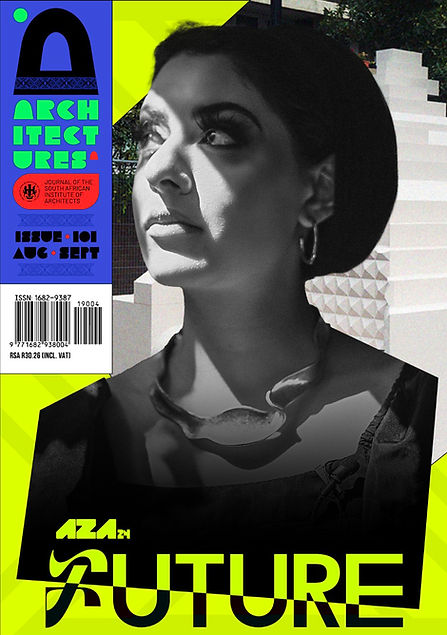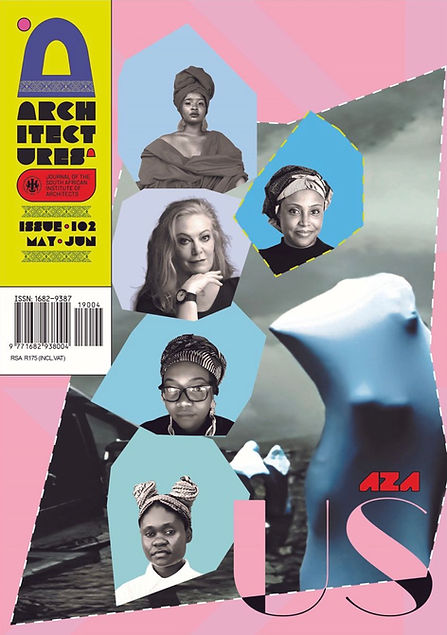
WORK WE'VE DONE
The following is a selection of recent works_contact us for our full portfolio
“OUR WORK AS CULTURAL CONSULTANTS SPANS STRATEGY AND DESIGN SERVICES, HIGHER EDUCATION INNOVATION, CAPACITY BUILDING THROUGH PUBLIC ENGAGEMENT, AND CUTTING-EDGE RESEARCH.”
– DR. SECHABA MAAPE

AZA_2025//
Place: Johannesburg
Photo Credit: Lumkile Hermans
AZA 2025
Cultural Consultation and Public Engagement_Lecture and Film Screening. Johannesburg, South Africa_2025
At the 2025 AZA Conference, Dr. Sechaba Maape delivered Ontological Dialectic, a keynote that crystallised more than a decade of work pivoting the field of architecture toward cultural responsiveness. His talk was not only a reflection of his own intellectual journey, but also a live demonstration of the strategies required for cultural pivoting in a rapidly shifting world.
AZA itself had grown out of cultural shifts seeded the year before through the relaunch of Architecture South Africa under Dr. Maape’s editorship, and the 2024 Keyes Art Mile public launch that foregrounded architecture’s cultural relevance. By 2025, the demographic, energy, and creative presence at AZA revealed the unmistakable threshold of a new cultural era in the discipline. Speaking last on the programme, Dr. Maape set the tone for this transition: architecture, he argued, must strategically blend with African culture if it is to remain relevant.
The talk traced his path from searching for an “essential” African architecture to recognising hybridity as South Africa’s true essence, a dialectical, transformative condition that fuels creativity. Referencing Frantz Fanon and Virgil Abloh’s seminal Harvard GSD lecture, he showed how archives of African culture could be reworked into contemporary propositions, much as Abloh reframed Nike's sneakers from being sportswear to being recognise as cultural fashion, giving new life and relevance to the brand.
Performance was central to the message. Dressed in a RareBlaq garment emblazoned with the word “AFRICAN” in bold Helvetica quotation marks (again a homage to Abloh), Maape embodied the act of questioning and reframing identity. His slides, digital drawings, and the unveiling of the Arquiteturas Film Festival trophy (first shown in South Africa) extended this gesture, pointing toward an architecture freed from essentialism and alive to cultural transformation.
Ontological Dialectic positioned Dr. Maape not only as a speaker, but as a cultural consultant to the discipline itself, alerting the field to the need for strategic cultural pivoting and demonstrating what that pivot could look like in practice.

photo by Lumkile Hermans

photo by Lumkile Hermans

photo by Lumkile Hermans

photo by Lumkile Hermans




Ontological Dialectics 2025//
Slides Produced by: Dr Sechaba Maape

Tropical Ontology_2025//
Place: Johannesburg
Image Credit: Dr Sechaba Maape
Tropical Ontology - AI and Cultural Inteligence
Research and Public Engagement_Exhibition and Film Screening. Johannesburg, South Africa_2025
For the past three years, Dr. Sechaba Maape has been leading an ongoing research project testing the efficacy of artificial intelligence through a cultural and contextual lens in Africa. The aim is urgent: can today’s AI tools meaningfully respond to African realities? If they cannot, they risk irrelevance. But if they can, they may unlock vast dormant potential on the continent, new markets, new cultural expressions, and new pathways for sustainable growth.
Tropical Ontologies, opened on 7 April 2025 at the Wits School of Architecture and Planning, was one outcome of this research. The exhibition acted as a live test of AI’s cultural applicability: could generative tools, guided by African cultural intelligence, produce futures that felt resonant, compelling, and real?
The show unfolded across multiple media. A film, Tropical Ontologies, was screened with a soundtrack by Nigerian musician Adey Omotade, whose Yoruba-inspired “Post-Afrobeat” compositions created a sonic dialogue with the visuals. Large-scale speculative images of African futures were generated using cultural frameworks developed by Maape over more than a decade of research, tested over the past three years within the scope of AI’s capabilities. Artist Emalohi Iruobe contributed digital prints rooted in Yoruba heritage, expanding the dialogue into visual form. On the facade of the John Moffat Building, the word “AFRICAN” appeared in bold Helvetica capitals, a simple but forceful declaration of presence.
Framed this way, the exhibition was not just an artwork but a testbed: a way to measure how AI and cultural intelligence might work together. It offered insight into how global technologies could be repositioned for African markets, and how institutions, governments, and companies might adopt AI in ways that are culturally grounded, socially sustainable, and economically transformative.
The data generated through this three-year research is now part of Afreetekture’s offering. It is a resource for organisations seeking to pivot into AI, as well as for companies developing AI tools who want to understand cultural impact, anticipate risks, and maximise relevance in diverse contexts.
Building on this foundation, Afreetekture has launched AI + CI (Artificial Intelligence and Cultural Intelligence) literacy workshops across sectors, from the Fak’ugesi Festival at Tshimologong Tech Hub, to CPD Central’s accredited programs, to Rotterdam University, the Department of Human Settlements, and the University of Cape Town. These workshops demonstrate in practice that the question is not simply how to use AI, but how to use AI in Africa, and it is this distinction that sets Afreetekture apart.
.


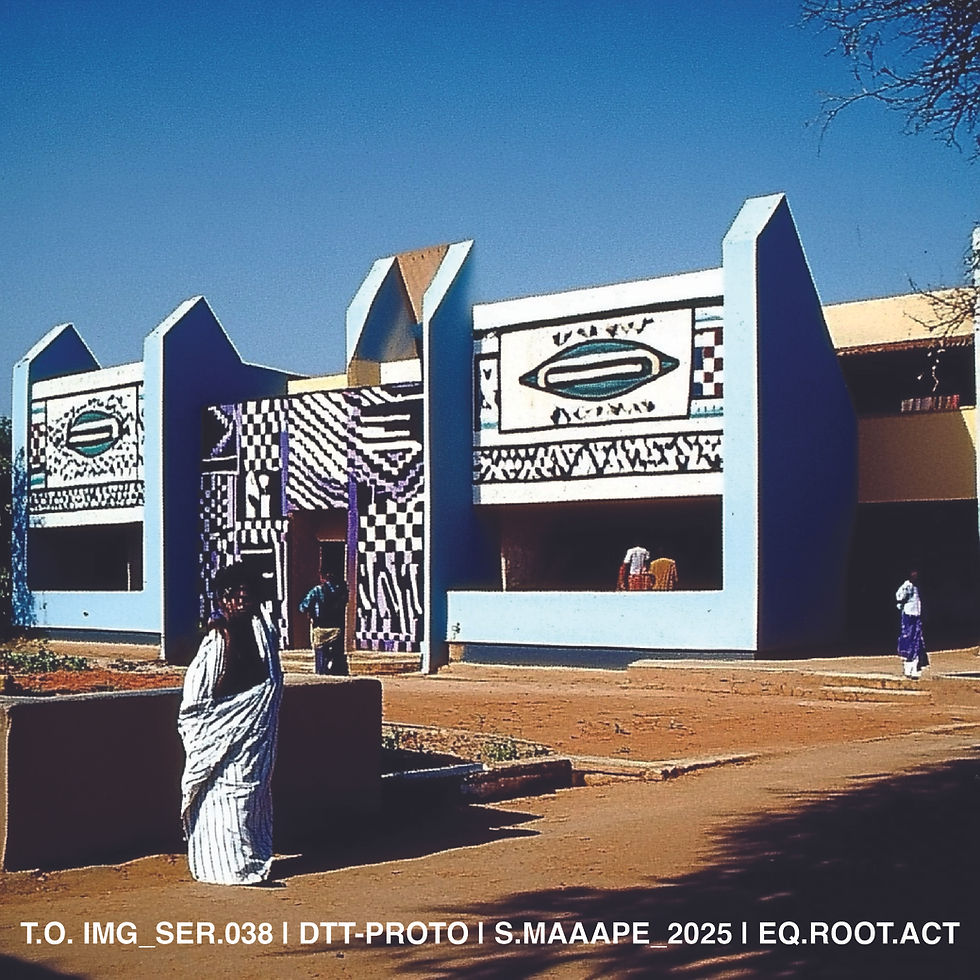

Tropical Ontology 2025//
Film design and Production: Dr Sechaba Maape
Sound design and Production : Adey Omotade
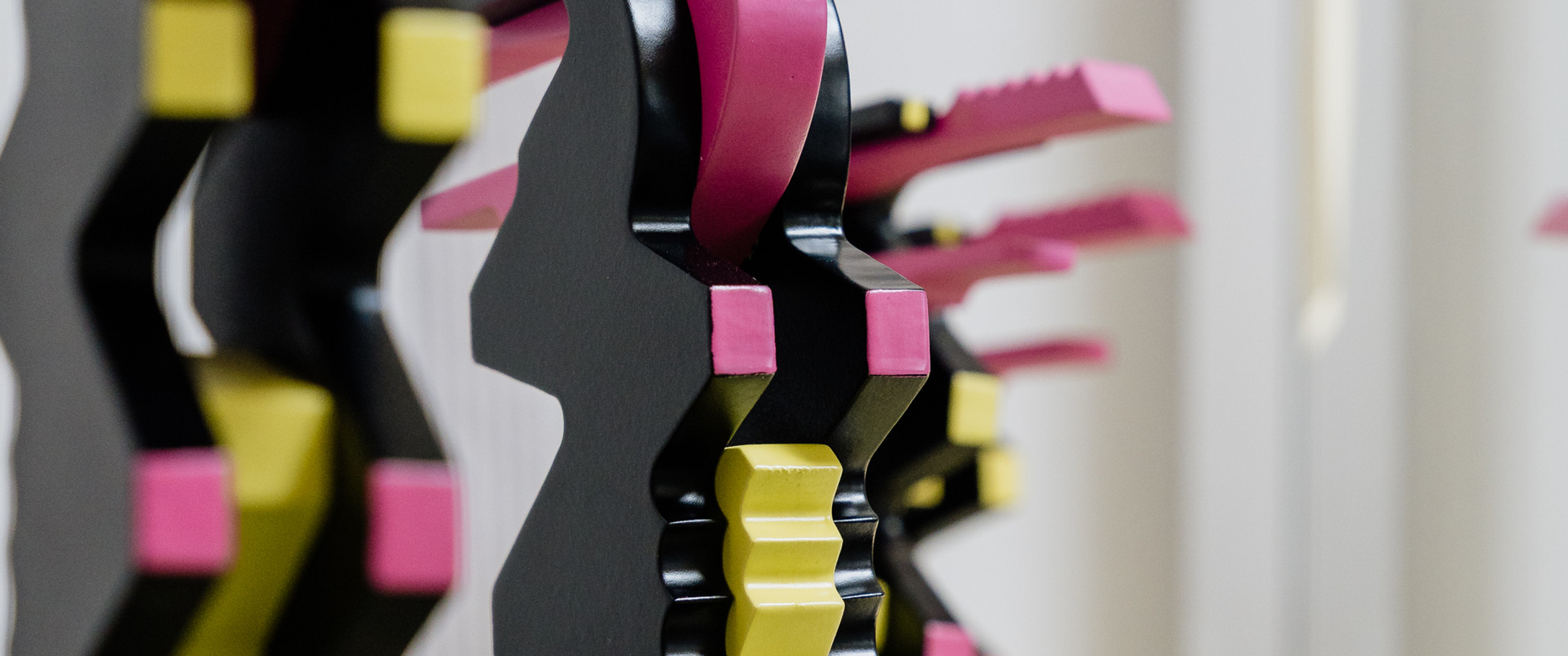
Arquiteturas Film Festival Trophy_2025//
Design By: Dr Sechaba Maape
Produced by: ArtWorks_Porto
Photo Credit: Goncalo Gomes
Arquiteturas Film Festival Trophy
Strategic Cultural Consultation_Design, AI and prototyping for digital fabrication. Porto, Portugal_2025
In January 2025, Afreetekture was invited by Portuguese architect Paulo Moreira and his organisation INSTITUTO to develop the inaugural trophy for the Arquiteturas Film Festival in Porto. Rather than approaching it as a simple design commission, we framed the project as a strategic act of cultural consultancy: how could a single object expand the festival’s identity, connect it to wider Lusophone and African contexts, and generate long-term symbolic capital?
During a two-week residency in Porto, Dr. Sechaba Maape engaged with artists, architects, and cultural practitioners navigating Europe’s own postcolonial shifts, from the Frame Collective in Lisbon, reworking colonial monuments, to diasporic communities at Hangar, Lisbon’s contemporary art space. These encounters made it clear that Portugal’s cultural landscape is deeply entangled with African and South American histories. The trophy became an opportunity to materialise this entanglement, positioning the festival as part of a broader global dialogue.
Drawing on the legacy of Pancho Guedes, an iconic figurative form that combined bold colour, sculptural presence, and symbolic resonance. At its base, a concealed stamp was integrated. The original concept had been to inscribe the word AFRICAN, a satirical gesture suggesting that whatever it touched would be transformed into African. Ultimately, the inscription chosen was the festival’s own name, Arquiteturas Film Festival, but the underlying symbolism of cultural marking, transformation, and identity remained embedded in the design. The trophy was produced in collaboration with ARTWORKS, a fabrication company known for working with leading figures such as Francis Kéré. Using digital modelling and fabrication, the process blended contemporary techniques with symbolic strategies, pulling the trophy into the 21st century while grounding it in African references and Lusophone cultural entanglements.
The result was more than a trophy: it became a cultural strategy in object form, embodying the festival’s vision to move beyond a narrow Portuguese identity and into dialogue with Lusophone Africa, Brazil, and the wider world. Awarded for the first time on 27 June 2025 at Batalha Centro de Cinema, the trophy now anchors the festival with a symbol that accrues value year after year as a marker of its cultural positioning. Through this project, Afreetekture demonstrated how design can operate as cultural consultancy: reframing identity, embedding narrative, and turning material artefacts into enduring carriers of meaning.
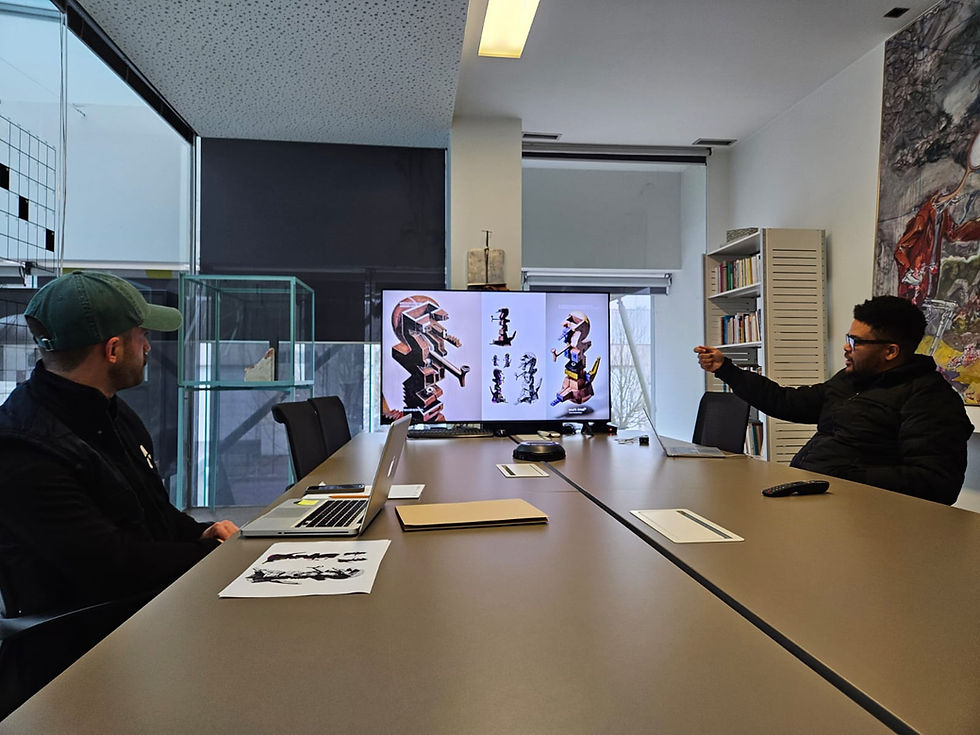
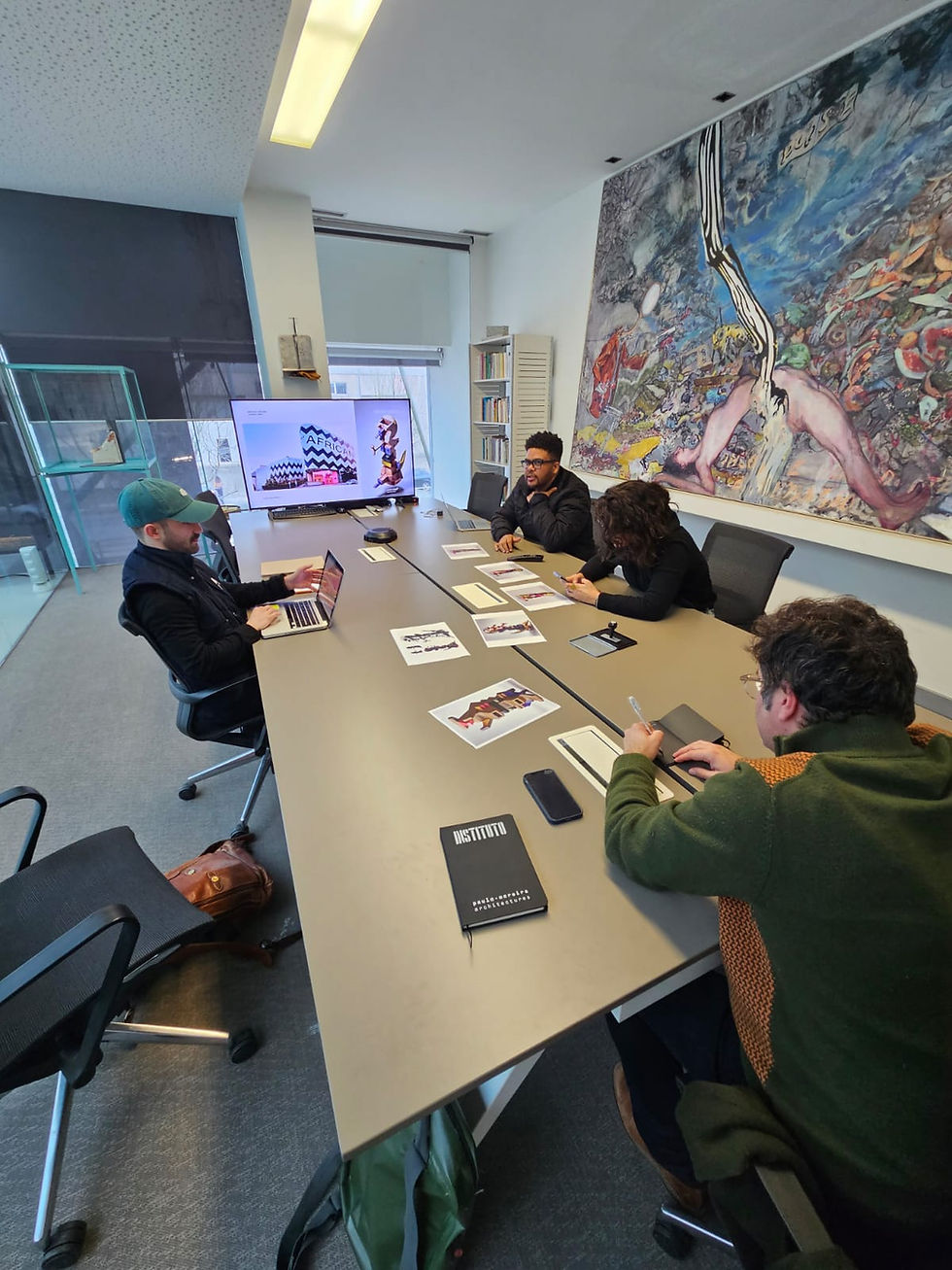
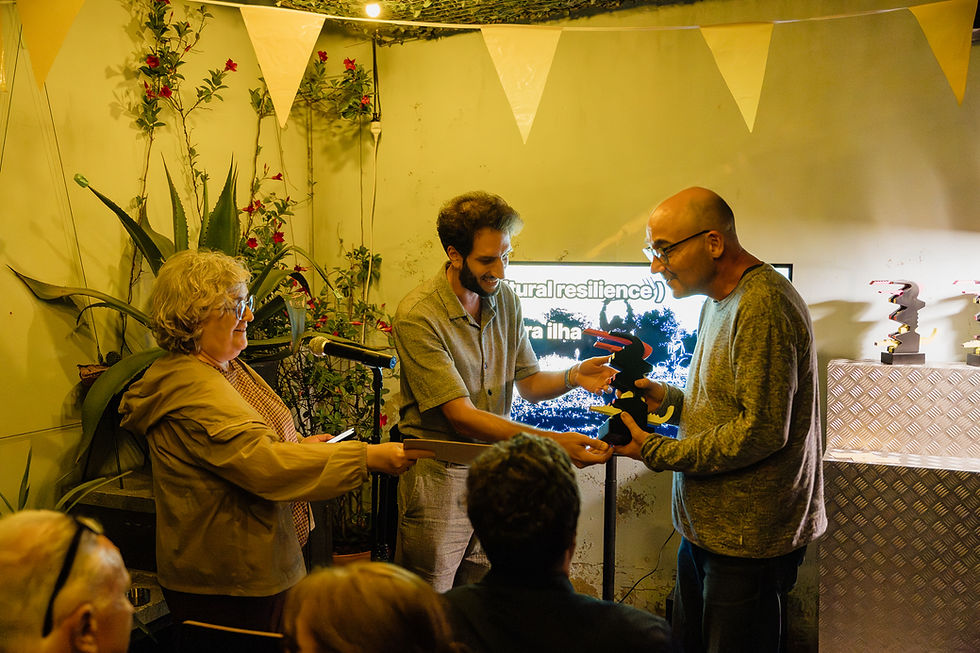

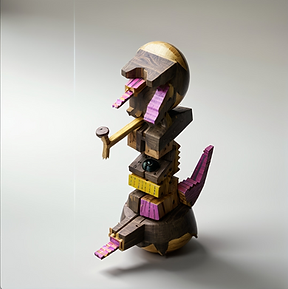
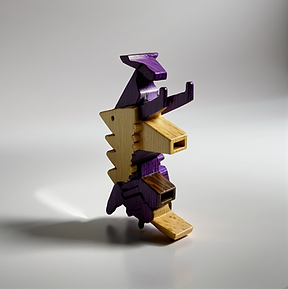
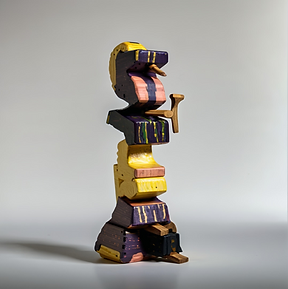
Trophy AI Iterations
Design and AI prototyping: Dr Sechaba Maape

ArchitecturesA Issue 101_2024//
Place: Johannesburg
Image Credit: Dr Sechaba Maape
ArchitecturesA Journal
Strategic Cultural Consultation and Editor_Creative direction, editing and relaunch. Johannesburg, South Africa_2024/2025
In 2024, Dr. Sechaba Maape was appointed Interim Editor of Architecture South Africa at a moment when the journal had gone dormant after its landmark 100th issue. Tasked with reviving the flagship publication of the South African Institute of Architects (SAIA), Maape’s approach went far beyond continuity. He repositioned the journal not just as a record of architectural practice, but as a cultural instrument capable of pivoting the profession itself.
The strategy was twofold. First, a complete rebrand of the journal’s look and feel, aligning it less with traditional trade publications and more with the energy of cultural magazines and platforms such as Hype. Second, a deliberate infusion of cultural and symbolic capital through contributors who carried relevance both inside and outside architecture. Issue 101 placed Sumayya Vally on the cover, situating her as a thought leader while drawing wider audiences into the journal’s orbit. Alongside her, figures like Tim Fu, who had left Zaha Hadid Architects to launch an AI-driven practice, embodied architecture’s technological and cultural transitions.
Issue 102 extended the experiment further, including RareBlaq, a Johannesburg fashion designer working at the intersection of fashion and architecture. By inviting contributors from outside the discipline, Maape demonstrated that architectural culture is not confined to buildings alone, but flows through art, fashion, technology, and identity. The relaunch was staged as a public cultural event. Held on 5 September 2024 at Keyes Art Mile during Johannesburg’s First Thursdays and the FNB Art Fair, the launch drew architecture into the city’s cultural bloodstream. The event combined a panel discussion with emerging voices, live performances by Kgaugelo Lekalakala and a hip-hop artist, and the participation of student editor Avela Swana, ensuring that youth voices and energy anchored the moment.
This combination of editorial repositioning and cultural activation repositioned Architecture South Africa as a site of experimentation, relevance, and symbolic capital. It also reframed SAIA itself, signaling to architects, clients, and sponsors that the institution was willing to embrace cultural change. The relaunch helped set the tone for the broader cultural pivot that would culminate at AZA 2025, where architecture’s future was openly debated in relation to shifting demographics, technologies, and publics. Through this work, Afreetekture demonstrated its core value: helping established institutions strategically pivot through culture, transforming a dormant professional journal into a vibrant cultural platform that speaks to contemporary society while retaining its institutional authority.


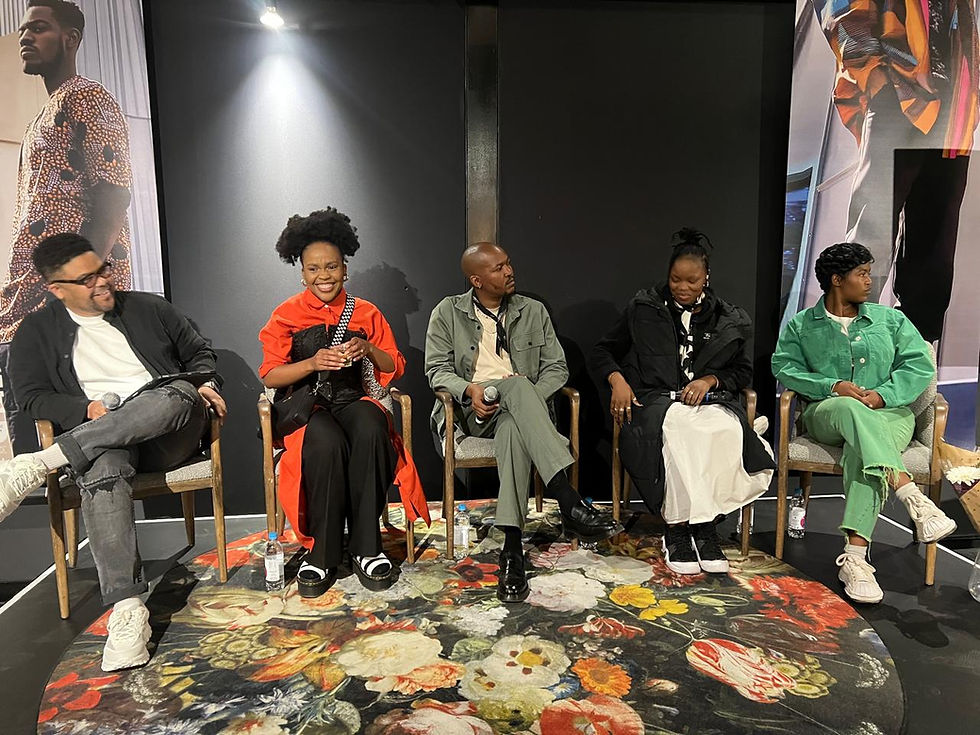

ArchitecturesA Journal covers Issues 101 & 102_2025//
Place: Johannesburg
Image Credit: ArchitecturesA

Council of Non Human Beings_2023//
Medium: Digital Drawing
Place: Venice, Italy
Image Credit: Dr Sechaba Maape

South African Pavillion, La Biennale di Venezia
Cultural Consultation_Creative direction, narrative and exhibition_Venice, Italy_2023
In 2023, Afreetekture, led by Dr. Sechaba Maape, was appointed as one of the co-curators of the South African Pavilionat the 18th Venice Architecture Biennale, alongside Dr. Emmanuel Nkambule and Stephen Steyn. Commissioned by the Department of Sports, Arts and Culture, the pavilion became a flagship project for Afreetekture’s role as cultural consultant on an international stage.
Dr. Maape’s contribution began with the conceptual framing of the pavilion and soon evolved into shaping its cultural narrative, articulating the “why” behind the design moves and anchoring the exhibition in South Africa’s cultural capital. His earlier research on indigenous cosmologies informed the visual language of the pavilion: a drawing of the sacred snake, rooted in South African oral traditions, became the pavilion’s emblem. This symbol was projected during the pre-launch event in Venice, where DJ Oskido performed against a backdrop of Maape’s work, setting a tone of cultural power and atmosphere.
Within the pavilion itself, Afreetekture authored and designed The Council of Non-Human Beings, a dark, immersive environment referencing San and Khoi caves of the Northern Cape. Tall digital artworks evoked sacred presences, infusing the space with an atmosphere of indigenous intelligence while standing alongside high-tech structures, augmented reality features, and modular architectural components. The juxtaposition of cultural depth and technical precision became a statement in itself: South African architecture as both rooted and global.
Maape’s role extended beyond design into cultural mediation and media presence, positioning the pavilion’s narrative for international audiences. He framed the exhibition as evidence of South Africa’s cultural potency, weaving together design, technology, and indigenous knowledge into a compelling story. The presence of figures like former president Thabo Mbeki at the launch amplified this cultural moment, underscoring the pavilion’s symbolic weight.
By reframing design interventions into a coherent cultural strategy, Afreetekture turned the pavilion into more than an exhibition, it became a diplomatic and symbolic asset for South Africa on the global stage. This project stands as an early demonstration of Afreetekture’s consultancy model: helping institutions harness cultural capital, integrate narrative, and position themselves powerfully within shifting global contexts.




Council of Non Human Beings_2023//
Medium: Digital Drawing and AI Animation
Place: Venice, Italy
Image Credit: Dr Sechaba Maape



